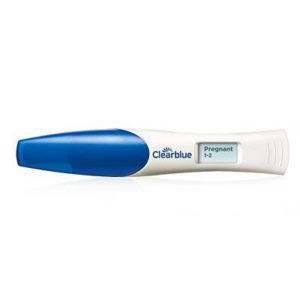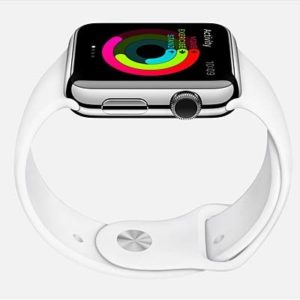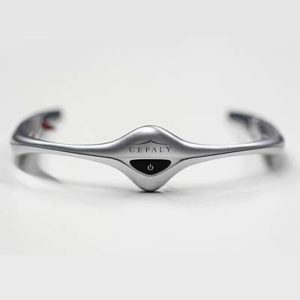NEW MEDICAL BREAKTHROUGHS : A Well Thought Out Scream by James Riordan

Fortunately, the science of medicine keeps pushing forward. For every real breakthrough, there are countless failures, hundred of experiments, and thousands of hours of study. Here are some of the things on the health horizon (you like that alliteration there – health horizon? I could add to it say happy health horizon or possibly holistically happy health horizon Of course, that would be inaccurate, but when it come to alliteration… Or maybe even Houston’s Happy Holistic Health Horizon. No?). Anyway these are some of the things in the very near future that may improve and prolong our live.
A real cure for Hep C
Usually symptomless, hepatitis C kills 15,000 Americans a year. Until now, treatment helped a mere 30 to 40% of people with the virus, which is passed via infected blood and can lead to liver failure and liver cancer. But in December 2013, the FDA approved Sovaldi (sofosbuvir), a pill that cures up to 90% of hep C patients when used with another new drug, simeprevir. “Before, it was like fighting a war with flyswatters, but now the big guns have arrived,” says Douglas Dieterich, MD, professor of medicine in the division of liver disease at Mount Sinai Hospital in New York City, who also was involved in clinical trials of Sovaldi. More help is expected to be FDA-approved soon: ledipasvir, combined with sofosbuvir, for one form of hep C known as genotype 1, as well as a three-drug cocktail that has cured 90% of people treated with it.
A smarter pregnancy test
 An upgraded pee stick from Clearblue not only tells you if you’re pregnant but also gives you an idea of how far along you might be, via an extra strip that measures the concentration (not just the presence) of human chorionic gonadotropin in your urine. “It doesn’t beat the tests your doctor will run. But it could help women with irregular periods (caused by, say, breast-feeding or polycystic ovary syndrome) begin prenatal care on time,” says Pamela Berens, MD, professor of ob-gyn at the University of Texas Health Science Center.
An upgraded pee stick from Clearblue not only tells you if you’re pregnant but also gives you an idea of how far along you might be, via an extra strip that measures the concentration (not just the presence) of human chorionic gonadotropin in your urine. “It doesn’t beat the tests your doctor will run. But it could help women with irregular periods (caused by, say, breast-feeding or polycystic ovary syndrome) begin prenatal care on time,” says Pamela Berens, MD, professor of ob-gyn at the University of Texas Health Science Center.
A watch that tracks your health
Say good-bye to your current fit tracker: The Apple Watch, when used with your iPhone, can log your steps and even your heart rate, giving you more feedback in one gizmo than ever. (Oh, and you can ask Siri for directions during your runs.) Available early next year, the watch will sync with the Health iPhone app, which you can get now. You can use Health to import your calorie, sleep, and fitness data from apps you already use, like Nike+.
An alternative cancer treatment
 Everyone knows the storied side effects of chemotherapy: hair loss, diarrhea and more. That’s because chemo drugs destroy cells that multiply quickly, whether they’re cancerous or healthy. But scientists are finally finding success with a more selective approach: immunotherapy. These treatments harness your body’s natural defenses to beat cancer back. “What we’ve discovered is that cancer cells evade your immune system by putting it into overdrive, causing it to tire out and give up. The new drugs interrupt the cycle so your body can fight,” explains J. Leonard Lichtenfeld, MD, deputy chief medical officer of the American Cancer Society. The results so far have been staggering: “It’s not an overstatement to say this is a turning point in cancer research, especially for patients with melanoma,” Dr. Lichtenfeld says. Treatments for cancers of the kidney, lung and pancreas could be up next.
Everyone knows the storied side effects of chemotherapy: hair loss, diarrhea and more. That’s because chemo drugs destroy cells that multiply quickly, whether they’re cancerous or healthy. But scientists are finally finding success with a more selective approach: immunotherapy. These treatments harness your body’s natural defenses to beat cancer back. “What we’ve discovered is that cancer cells evade your immune system by putting it into overdrive, causing it to tire out and give up. The new drugs interrupt the cycle so your body can fight,” explains J. Leonard Lichtenfeld, MD, deputy chief medical officer of the American Cancer Society. The results so far have been staggering: “It’s not an overstatement to say this is a turning point in cancer research, especially for patients with melanoma,” Dr. Lichtenfeld says. Treatments for cancers of the kidney, lung and pancreas could be up next.
New Tech for Migraine Pain
Technology is opening up a new route to much-needed headache helpers. “Current drugs just don’t do the trick for many people,” says John Delfino, MD, a headache specialist at NYU Langone Medical Center. But the FDA recently approved two gadgets for migraines: Cefaly, a band that’s worn across your forehead for 20 minutes daily, and SpringTMS, a device you hold to the back of your head at the onset of pain. Both work by stimulating certain nerves deep in the head, using electrical signals (in the case of Cefaly) or magnetic energy (for the SpringTMS). There’s also new hope for debilitating cluster headaches in the form of an electrode that’s implanted behind the jaw and controlled by a remote. In the initial trial, 68% reported relief when they turned on the electrode during a headache, and of that group, over 80% had fewer episodes.
A new way to fight breast cancer
Women with ductal carcinoma in situ (DCIS), an abnormality that can become invasive breast ca ncer, or a strong family history of the disease are often prescribed tamoxifen to prevent it. “But many women won’t even start taking it, because they’ve heard of side effects like hot flashes and blood clots,” says Seema Khan, MD, of Northwestern Memorial Hospital in Chicago. To see if there might be a better way, Dr. Khan prescribed tamoxifen in the form of either a pill or a gel applied to the breast to 26 women awaiting surgery for DCIS. Women who used the gel showed the same decrease in abnormal cell growth as the pill group—and they had no increase in blood markers linked to clots and other symptoms. The availability of the gel is still a few years away, but Dr. Khan says a topical gel might work for other drugs as well, suggesting that this is one discovery that could lead to many more.
ncer, or a strong family history of the disease are often prescribed tamoxifen to prevent it. “But many women won’t even start taking it, because they’ve heard of side effects like hot flashes and blood clots,” says Seema Khan, MD, of Northwestern Memorial Hospital in Chicago. To see if there might be a better way, Dr. Khan prescribed tamoxifen in the form of either a pill or a gel applied to the breast to 26 women awaiting surgery for DCIS. Women who used the gel showed the same decrease in abnormal cell growth as the pill group—and they had no increase in blood markers linked to clots and other symptoms. The availability of the gel is still a few years away, but Dr. Khan says a topical gel might work for other drugs as well, suggesting that this is one discovery that could lead to many more.






No Comment